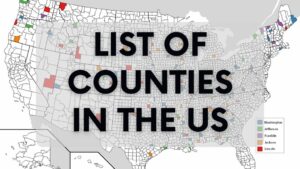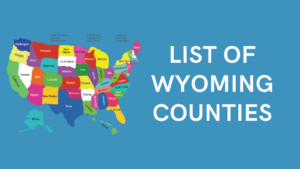When hurricanes and tropical storms approach Florida, evacuation orders play a critical role in keeping residents safe. The List of Florida Counties under Evacuation Orders helps people understand which regions are most at risk, ensuring they have enough time to prepare and relocate to safer areas. These orders are issued by local officials in coordination with emergency management agencies, based on factors such as storm surge predictions, wind speeds, flood zones, and infrastructure vulnerabilities. By paying attention to these official directives, residents can make informed decisions that protect both lives and property.
Understanding Evacuation Orders in Florida
Florida has a long history of dealing with hurricanes, and the state’s unique geography makes certain regions more vulnerable than others. Evacuation orders are not given lightly, as they involve significant disruption to communities, businesses, and local economies. They are usually classified into voluntary and mandatory categories. Voluntary evacuations are recommended when conditions may become dangerous but not immediately life-threatening, while mandatory evacuations are issued when authorities determine that staying behind could pose serious risks. Evacuation lists are frequently updated as storms shift paths and intensify, making it crucial for residents to stay informed through reliable news outlets and official government updates.
Factors That Influence Evacuation Orders
Several factors are considered before officials release evacuation orders. Coastal areas prone to storm surges are usually the first to be included, as rising waters can flood homes and infrastructure. Inland counties may also be added if heavy rainfall increases the risk of flooding or if strong winds threaten widespread damage. Florida’s flat terrain and extensive coastline mean that even minor shifts in a storm’s path can alter evacuation plans significantly. Emergency response teams work closely with meteorologists, using predictive models to anticipate the areas most likely to be affected, which is why evacuation updates may change multiple times during a single storm event.
Recent Trends in Florida Evacuations
Over the past decade, Florida has faced several major hurricanes that triggered large-scale evacuations. Hurricane Irma in 2017, for example, resulted in one of the largest evacuations in U.S. history, affecting millions of residents across multiple counties. More recently, storms like Hurricane Milton have highlighted the importance of timely communication, as evacuation orders can expand or shrink within hours depending on the storm’s trajectory. Authorities have improved digital alert systems, real-time mapping tools, and local shelter updates to keep residents informed. This constant flow of information ensures that people know whether their county is under an evacuation directive and can take immediate action.
The Role of Emergency Management Agencies
Emergency management agencies at both the state and county level coordinate evacuation orders. The Florida Division of Emergency Management works alongside local officials to assess risks and provide guidance. Each county has its own emergency response team, which issues alerts tailored to local conditions. For example, Miami-Dade County may issue early evacuation notices due to its dense population and vulnerability to storm surges, while inland counties like Polk may update residents later based on rainfall forecasts. By working together, these agencies ensure that evacuation alerts remain accurate and actionable.
Impact on Residents and Communities
Evacuations can be stressful for families, especially when orders are issued with limited time to prepare. Residents often face challenges such as traffic congestion, fuel shortages, and finding suitable shelter. Businesses must also make quick decisions about closures, while hospitals and nursing homes coordinate patient transfers to safer facilities. Despite these difficulties, evacuation orders save lives and reduce the strain on emergency responders during and after the storm. Communities that follow official evacuation guidance generally recover more quickly, as fewer lives are lost and damages are minimized.
Challenges During Evacuations
One of the biggest challenges during an evacuation is the sheer scale of movement required. Millions of Floridians may be directed to leave their homes at the same time, overwhelming highways and creating long delays. Another issue is accessibility, as elderly residents or those without reliable transportation may struggle to evacuate. Local governments often provide buses and assistance programs to ensure everyone has the opportunity to reach safety. Additionally, misinformation can spread quickly during crises, making it essential for residents to rely on official updates when checking whether their area is under an evacuation order.
Preparing for Evacuation
Preparation is key when it comes to hurricanes in Florida. Families are encouraged to create emergency plans well before storm season begins. This includes identifying evacuation routes, packing emergency supplies, and knowing the locations of nearby shelters. Pet owners should also make arrangements for their animals, as not all shelters allow pets. Having a plan in place ensures that when evacuation notices are issued, residents can act quickly and avoid last-minute panic. By preparing early, families reduce stress and increase their chances of staying safe during a hurricane.
The Role of Shelters and Safe Zones
Shelters provide a vital refuge for people who cannot evacuate far from their homes. These facilities are often set up in schools, community centers, and other public buildings. They are stocked with basic necessities such as food, water, and medical supplies. Some shelters are designated specifically for families, while others may accommodate individuals with medical needs. When evacuation orders are announced, residents are directed to their nearest shelters through official websites, apps, and news outlets.Knowing where to go ahead of time can make the evacuation process smoother and less stressful.
Long-Term Effects of Evacuations
While evacuation orders are temporary, they can leave lasting impacts on communities. Businesses may face financial setbacks due to closures, and displaced families may struggle to return home if their neighborhoods suffer severe damage. Infrastructure repairs can take months or even years, depending on the extent of the storm’s impact. However, these challenges highlight the importance of taking evacuation orders seriously. Such directives serve as a reminder that proactive measures save lives and make recovery efforts more effective in the long run.
Economic Considerations
The economic costs of large-scale evacuations can be significant, but they are generally outweighed by the savings in lives and property. Insurance companies, local governments, and federal agencies all play a role in managing the financial aftermath of storms. While short-term losses are unavoidable, compliance with evacuation orders often reduces the overall cost of recovery by preventing catastrophic damage. Residents who stay updated on official evacuation guidance ultimately contribute to the resilience of their communities.
Conclusion
Florida’s unique geography and vulnerability to hurricanes make evacuation orders an essential part of disaster management. The List of Florida Counties under Evacuation Orders provides a clear guide for residents to know when it is time to leave and where to go for safety. By understanding how these orders are made, preparing ahead of time, and responding quickly, families can protect themselves from the dangers of hurricanes. Although evacuations can be challenging, they are a proven strategy for saving lives and reducing the devastating impacts of storms. Staying informed and taking official orders seriously is the best way for Floridians to safeguard their future during hurricane season.
FAQs
Why are evacuation orders important in Florida?
Evacuation orders are critical because they help protect residents from life-threatening conditions caused by hurricanes, including storm surges, flooding, and destructive winds.
How do I know if my county is under an evacuation order?
Residents should check official state and county emergency management websites, local news outlets, and weather alert apps to see if their county appears on the List of Florida Counties under Evacuation Orders.
Are evacuation orders the same for every storm?
No, evacuation orders vary depending on the storm’s size, intensity, and path. Each hurricane poses unique risks, so the list of affected counties changes accordingly.
What should I do if I cannot evacuate?
If you cannot evacuate, seek out the nearest designated shelter. Local authorities often provide transportation options for those without access to a vehicle.
Do evacuation orders apply to everyone in a county?
Not always. Sometimes, only specific zones within a county are ordered to evacuate, particularly areas most vulnerable to flooding and storm surges.





